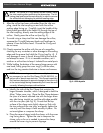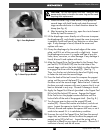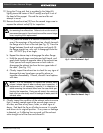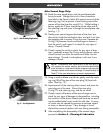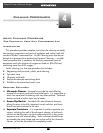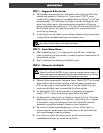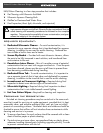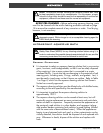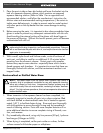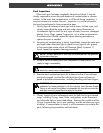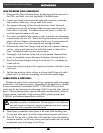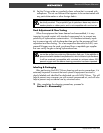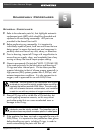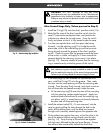
18
Copyright ©2001 Liberty Group
Atlas & Yukon Second Stage
EAN/Nitrox Cleaning is a four step procedure that includes:
▼
Pre-Cleaning with Ultrasonic Acid Bath
▼
Ultrasonic Aqueous Cleaning Bath
▼
Distilled or Demineralized Water Rinse
▼
Final Inspection (direct light, ultraviolet, and wipe test)
NOTE: Although second stage components are not usually exposed to
high pressure oxygen enriched air, Genesis Scuba recommends that the
same cleaning and assembly procedures be followed for the complete
regulator. This prevents the possibility of cross contamination, and guar-
antees the integrity of the complete system.
REQUIRED EQUIPMENT:
❏ Dedicated Ultrasonic Cleaner – To avoid contamination, it is
important to use a separate cleaner that is kept dedicated for aqueous
cleaning, in addition to one used for acidic cleaning. Preferred fea-
tures include a built-in timer and a heater.
❏ Screen Dip Basket – Provided with most ultrasonic cleaners, allows
the parts to be fully immersed in each solution, and transferred from
one container to the next.
❏ Powderless Latex Gloves – Skin oil is another source of potential
contamination that can react with oxygen enriched air. Once the parts
have been cleaned, gloves must be worn at all times to prevent them
from becoming contaminated during handling.
❏ Dedicated Rinse Tub – To avoid recontamination, it is important to
use a separate rinse tub that is kept clean and dedicated for aqueous
cleaning, in addition to the rinse tub that is used for acidic cleaning.
❏ Incandescent or Fluorescent Lighting – Required during final
inspection to detect more obvious signs of contamination.
❏ Ultraviolet Lighting – Required during final inspection to detect
contamination that is not visible beneath normal lighting.
❏ Lint Free Cotton Wipes – Required for cleaning and inspection.
Preparing the Workstation
Enriched air cleaning procedures may be carried out in the same work
area that is used for servicing air scuba equipment, provided that it is kept
reasonably clean, and airborne pollutants (dust, soot, etc.) are not visibly
present on surrounding surfaces. Ventilation ducts and windows should be
checked to ensure that airflow will not introduce these contaminants while
cleaning and service is in process.
▼ To ensure cleanliness, the work surface should be covered with a clean
sheet of butcher paper or plastic sheeting.
▼ The technician must wear clean, non-powdered latex or plastic gloves
whenever handling cleaned parts (including upgrade parts kit), in order
to prevent contamination with skin oil.



